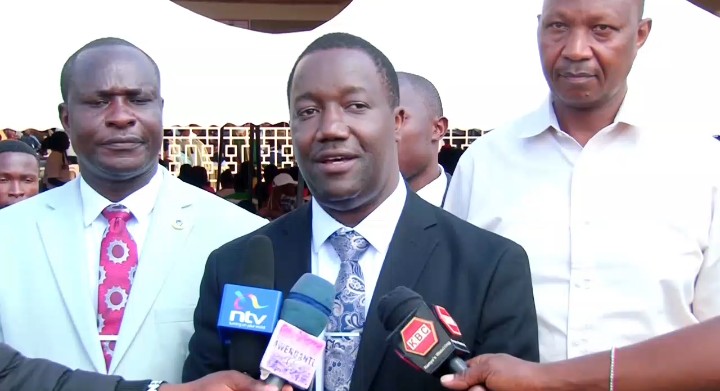The recent announcement to transition from Kenya’s Competency-Based Curriculum (CBC) to Competency-Based Education (CBE) has been heralded by some as a bold step toward educational reform.
Government officials and education stakeholders have touted this shift as a response to the challenges faced by CBC since its rollout in 2017. Yet, beneath the glossy rhetoric and rebranding, the truth is stark: this change is little more than a cosmetic facelift.
The core issues plaguing Kenya’s education system—underfunding, teacher shortages, infrastructure deficits, and inequity—remain unaddressed. The move from CBC to CBE is not a solution; it’s a distraction, and nothing substantial will change.
Let’s start with the obvious: the name change itself is a master class in bureaucratic sleight of hand. CBC, introduced to replace the exam-centric 8-4-4 system, promised to prioritize skills, creativity, and critical thinking over rote memorization.
It was sold as a transformative framework that would prepare Kenyan children for a dynamic, 21st-century world. Eight years later, the system is riddled with complaints—overburdened teachers, confused parents, inadequate resources, and an assessment system that feels like a rehashed version of the old exams it sought to replace.
ALSO READ:
Teacher unions push for higher pay rise, enhanced allowances in CBAs
Now, the Ministry of Education claims CBE will address these shortcomings. But what is CBE if not CBC with a new acronym? The core principles—competency-focused learning, student-centered approaches, and practical skills—remain identical. The shift in terminology is a hollow gesture, akin to repainting a crumbling house and calling it a renovation.
Proponents of CBE argue it will streamline implementation and address stakeholder concerns. Yet, the government has provided no clear blueprint detailing how CBE differs from CBC in practice.
The same curriculum frameworks, learning areas, and competency goals appear to be carried over with minor tweaks. If the problem with CBC was poor execution—teachers untrained in its methodologies, schools lacking basic materials like textbooks and desks, and parents struggling to afford project-based learning costs—how does rebranding it as CBE fix anything?
The answer is simple: it doesn’t. The structural deficiencies that crippled CBC will persist under CBE because the government has shown no commitment to tackling them head-on.
ALSO READ:
The lack of counsellors in schools is the cause of rising cases of depression among learners
Take teacher training, for instance. CBC’s success hinged on educators equipped to deliver a radically different pedagogy. Yet, many teachers were thrown into the deep end with minimal professional development.
Reports indicate that only a fraction of the 229,000 primary school teachers received adequate CBC training by 2023. Under CBE, there’s no evidence of a robust plan to retrain these educators or recruit more to address the teacher-student ratio, which in some regions exceeds 1:60.
Without well-prepared teachers, CBE will be just as ineffective as its predecessor; no matter how many times the government claims it’s “refined” the system.
Then there’s the issue of resources—or the lack thereof. CBC required schools to provide materials for hands-on learning, from art supplies to science kits. Many schools, especially in rural and marginalized areas, couldn’t comply.
Classrooms remain overcrowded, with some students sitting on the floor. The digital literacy component of CBC, which aimed to integrate technology, was a pipe dream for schools without electricity, let alone computers.
ALSO READ:
Frustrated field officers plead for TSC facilitation during TPAD, recruitment exercises
Has the government outlined a budget to equip schools for CBE’s demands? No. The 2025 education budget allocates a paltry 2.5 percent increase to basic education, far below the 6 percent GDP recommended by UNESCO. Without addressing these material shortages, CBE will inherit CBC’s failures, repackaged under a shinier name.
Parental and community engagement, another Achilles’ heel of CBC, is unlikely to improve under CBE. Parents, particularly in low-income households, struggled with CBC’s demands for project materials and frequent assessments that felt like additional financial burdens.
The system’s complexity alienated many who lacked the education or time to support their children’s learning. CBE promises “simplification,” but without concrete measures—like widespread parental education campaigns or subsidies for learning materials—this is empty rhetoric. The same parents who felt excluded by CBC will feel equally sidelined by CBE.
Perhaps the most damning critique is that the CBC-to-CBE transition ignores the elephant in the room: inequality. Kenya’s education system is a tale of two realities—well-funded private and urban schools versus under-resourced public and rural ones.
ALSO READ:
Education takes lion’s share as Parliament tables 2025/26 budget estimates
CBC exacerbated this divide, as wealthier schools could afford the infrastructure and staff to implement it effectively. CBE, with its recycled framework, offers no strategy to bridge this gap. Children in arid and semi-arid regions, where schools are often makeshift structures, will continue to receive a subpar education compared to their urban counterparts. The promise of “competency-based” learning means little when the baseline conditions for learning are absent.
The government’s insistence on pushing CBE as a fix reeks of political posturing. With public discontent over CBC mounting, especially after the chaotic junior secondary rollout, rebranding offers a convenient way to appear responsive without committing to the hard work of systemic reform.
It’s a classic case of motion without movement—shuffling papers, changing acronyms, and issuing press releases while the root causes fester.
In the end, the CBC-to-CBE switch is a mirage of progress. Kenyan students deserve an education system that equips them for the future, but that requires more than a new name. It demands investment in teachers, infrastructure, and equity—none of which CBE promises.
Until these fundamentals are addressed, the outcome is predictable: nothing will change. The same frustrations, inequalities, and inefficiencies will persist, dressed up in a new acronym but delivering the same old disappointments.
By David Kipkorir
You can also follow our social media pages on Twitter: Education News KE and Facebook: Education News Newspaper for timely updates.
>>> Click here to stay up-to-date with trending regional stories
>>> Click here to read more informed opinions on the country’s education landscape






